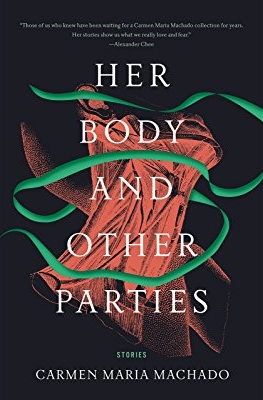Assignment Pick
Her Body and Other Parties: Stories by Carmen Maria Machado
An absolutely stunning collection from an author whose work has appeared only in the format of short fiction. The stories in this book are horrible, beautiful, bloody, and sincere. Each story seems to embody the feminine voice with an authenticity that feels unparalleled in much of today’s fiction and thematically addresses the horror of anxieties surrounding body image, fidelity, sculpting oneself into what lovers seem to want or need, violence, desire, and so much more. The pieces do not fit into any particular genre, as far as I can tell. Instead the stories weave between romance, science fiction, magical realism, and postmodern recontextualization.
I thoroughly enjoyed this book and immediately sent to my friends and relatives links from Granta and other online journals where the stories originally appeared. Each perfectly-executed piece so seemed to speak to me, my humanity, and some aspect of the women I loved, that I wanted to share Machado's brilliance with everyone I knew. Truly a genuine collection of dream-portraits of what it means to exist.
—Garrett Zecker
Garrett Zecker is a graduate of The Mountainview Low Residency MFA in Fiction and Nonfiction.




